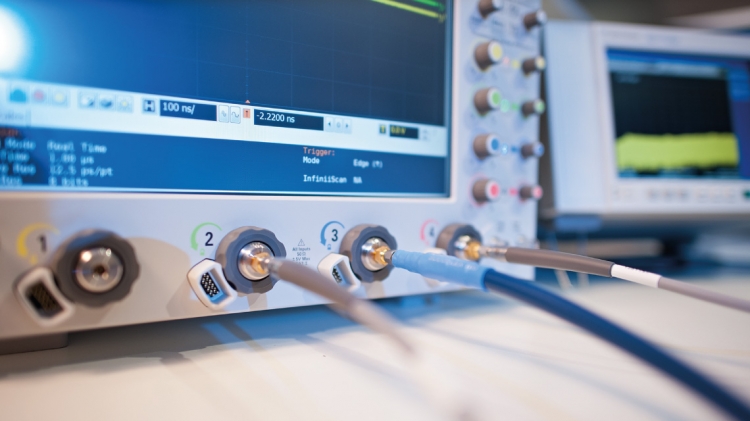
As our computers have become faster, so has the speed with which data can be transmitted. Internet bandwidth in particular has been growing at a staggering 40 to 50 per cent a year.
But still we want more. Streaming videos over the internet, and accessing huge files in the »cloud« demands ever faster computers, and ever faster networks. So far we´ve more or less managed it – but those rates of improvement can´t go on for ever.
Copper wire and fiber optics, the past and present technological innovations that allowed for rapid data transfer, are reaching their physical limits. So the search is on for a new way to meet the challenges of 21st century information technology and transfer.
One possible solution we have hit upon is the emerging field of silicon photonics – where data is transferred between and within devices by optical rays. Photonics is the science of generating, transmitting, controlling and detecting light. In photonic chips, nano devices use light signals and lasers to transmit and receive data.
In silicon photonic chips, laser light and silicon technology are combined on the same chip, allowing fast transfer – at the speed of light – and incredible bandwidth. Using silicon for the photonics elements allows them to be easily integrated with existing electronics, while also being more affordable.
Our research aims to use silicon photonics to reduce the power needed to send and receive data. By making the system more energy efficient, we hope to be able to increase the reach of network, so we can transmit data over greater distances without data amplifiers. That would save energy and make the process easier and cheaper.
The overall goal is to build optical links that support data rates exceeding 100 gigabits per second (Gbit/sec) transmission per channel, compared with the 10Gbit/sec available today. These optical links can be integrated on a device level – allowing the various parts of a device to exchange information more rapidly – or at a network level, allowing faster data transfer between ports and computers.
There are a number of challenges, though. It is very difficult to make a laser source in silicon. Currently there is no silicon laser light source good enough for efficient data transfer. Integrating photonics and electronics on the same material is made difficult by incompatibilities between photonics and electronics processing steps.
Current fabrication processes are optimized for making pure electronics devices. Introducing photonic components on the same chip would require additional fabrication steps that may disrupt the standard process and affect the performance of the electronic components.
Furthermore, much of the light is scattered within the electrical circuitry, and lost. Light is transmitted within channels, with mirror-like surfaces bouncing it back and forth, confining it within guiding regions. If these surfaces are even slightly imperfect, the light is scattered – not only losing it to the circuit it´s intended for, but possibly interfering with other circuits. To make our circuits as efficient as promised, we need to significantly reduce this scattering. And any solution we find must also be compatible with the industry´s existing fabrication facilities, as changing those processes and equipment would be unfeasibly expensive.
To address these challenges, my team is working to simplify the silicon photonics integration process. We are doing this by introducing a novel infrastructure to enable the fabrication of photonics in state-of-the-art electronic foundries without changing the process of making electronic circuitry. We are also looking to develop new component designs and add more functionality to photonics chips, using the high-level integration enabled by silicon photonics. Silicon photonics allows for light to be confined in a very compact manner, meaning more optical functions like modulators, detectors, and switches can be packed together on the same chip.
With this research, we hope to contribute to Abu Dhabi´s target of developing and advancing globally competitive sectors of information and communication technology and semiconductors. Establishing a new data transfer network built on silicon photonics would secure a competitive advantage for the UAE´s economic activity overall by facilitating business at the speed of light.
Additionally, the global photonic integrated circuit market is expected to reach US$1.5 billion (Dh5.5bn) in value by 2022, making it a lucrative market to get in to. This sort of interdisciplinary, collaborative research will also help develop the UAE´s human capital by nurturing and training the next generation of technical experts and innovators.
Dr. Mahmoud Rasras is associate professor of microsystems engineering at the Masdar Institute of Science and Technology.






